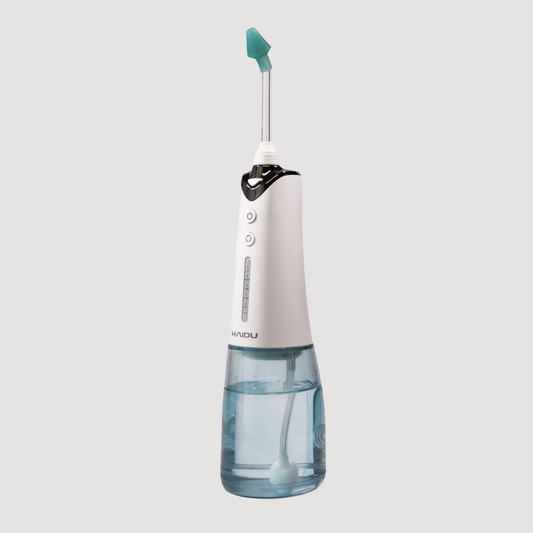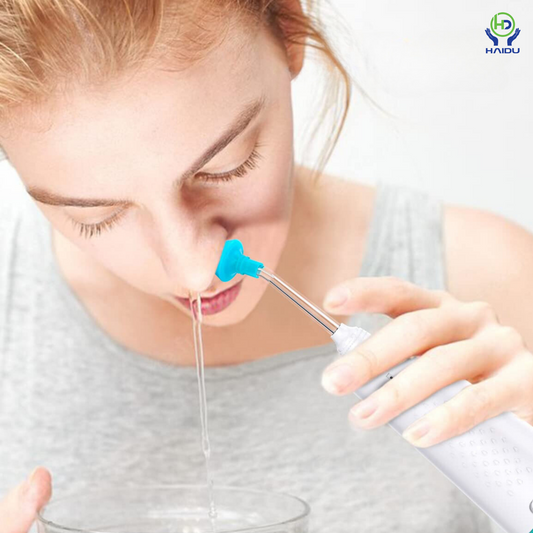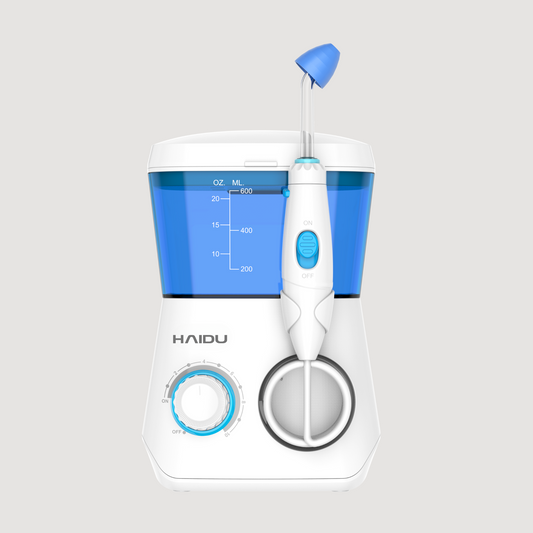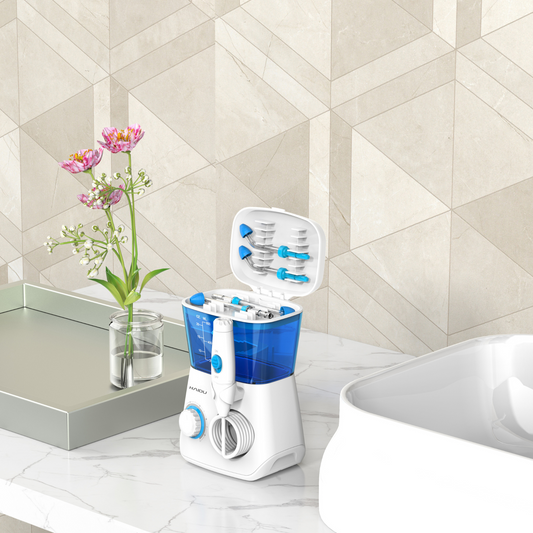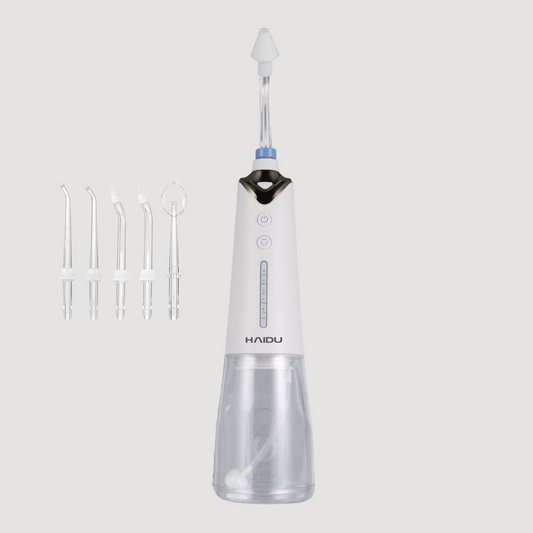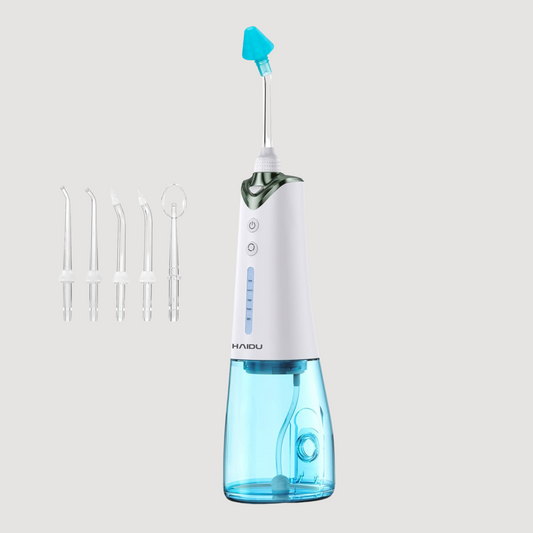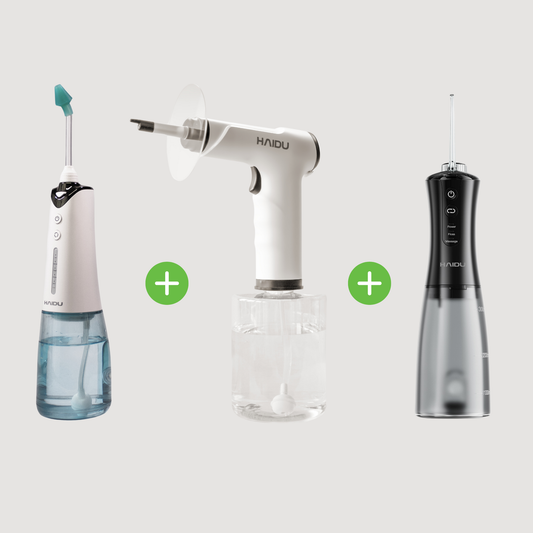Nasal irrigation with salt water
When the nose is congested, the first instinct for many people is to forcefully blow their nose. However, experts caution that this is not always the best approach. In this blog, we will explain why nasal irrigation with saltwater can be a safer and more effective method, especially after a nose or sinus surgery.
why rinse the nose with salt water?
Rinsing the nose with salt water is an age-old practice recommended by medical professionals worldwide. It not only helps remove excess mucus, allergens, and bacteria but also promotes quicker recovery after nose surgeries. Regular nasal irrigation reduces inflammation and keeps respiratory tract clear.
Moreover, a clean nose enhances the effectiveness of medications sprayed or dropped into the nose. A clean nasal cavity ensures better absorption of medication, making the treatment of specific conditions such as allergies, sinusitis, or nasal polyps more efficient. Nasal irrigation not only establishes a foundation for general nasal health but also strengthens the impact of targeted medical treatments.
Important conditions for proper nasal irrigation
To maximize the benefits of nasal irrigation, consider the following essential factors:
- Correct posture: Bring your chin to your chest. This position facilitates irrigation, allowing the saline solution to flow easily through the nose.
- Water temperature: Ensure the irrigation water is lukewarm, neither too hot nor too cold. A comfortable temperature prevents discomfort during irrigation.
- Choosing the right salt: Use iodine-free salt for the saline solution. Note that salt with iodine may cause irritation to sensitive or inflamed nasal mucosa.
- Adequate irrigation volume: Use approximately 150 to 300 ml of saline solution. Sufficient irrigation volume is crucial for effective nasal cleansing; too little may be insufficient.
- Gentle 'positive pressure': Irrigate with a light 'positive pressure.' This helps loosen excess mucus and pus, ensuring the saline solution reaches higher nasal sinuses. This technique contributes to a thorough cleansing of the nasal cavity.
Ways to irrigate
Various methods can be employed to irrigate the nose, ranging from the use of a nasal pot to manual irrigation with a syringe or saline solution spray. Additionally, the use of electrical equipment provides a modern and efficient way to irrigate the nose. Here are detailed instructions for the different irrigation methods so you can choose the one that best suits you:
- Nasal pot: Gently pour the saline solution into the pot and bend your head forward over the sink. Slowly pour the solution into one nostril so that it flows out of the other nostril. Repeat on the other side.
- Manual irrigation with syringe: Fill a syringe with the saline solution and gently place the tip into the nostril. Inject the solution slowly while tilting the head slightly to the side, allowing it to flow out of the other nostril. Repeat on the other side.
- Saline solution spray: Use a commercial saline solution spray according to the instructions on the packaging. Keep the head straight and administer the spray into each nostril as prescribed.
- Electrical equipment: Utilize an electric nasal irrigation device following the provided instructions. Ensure you hold your nose well above the sink to catch the draining irrigation water.
Regardless of the method chosen, be mindful not to swallow the saline solution. If you feel or taste the liquid in your mouth, you are using the saline solution correctly. Repeat the irrigation process until your nose is clean and you can breathe freely. Not swallowing the irrigation salt helps prevent nausea. Choose the method that best suits your preference and comfort. In case of doubt or specific health concerns, consult a healthcare professional for advice.
Preparing the saline solution
A properly prepared saline solution is the key to a successful nasal irrigation. Here are some important points to keep in mind when making your saline solution:
- Use iodine-free salt: Use salt without iodine to prevent irritation to the sensitive nasal mucosa.
- Correct salt concentration: Irrigating with a solution that contains too much or too little salt can be painful. Adhere to the recommended mixing ratio for a comfortable and effective nasal irrigation.
- Water temperature: Use lukewarm water with a temperature equal to body temperature (approximately 37 degrees Celsius). A pleasant temperature prevents discomfort during irrigation.
- Allow boiled water to cool: If using boiled water, let it cool to lukewarm water. When using a hot water dispenser with adjustable water temperature, choose the temperature of lukewarm.
- Shelf life: Homemade saline solution is typically usable for about two days. Ensure you prepare a fresh solution for each nasal irrigation session.
The correct mixing ratio for saline solution is:
- 9 grams (iodine-free) salt to 1 liter of lukewarm tap water, or
- 1 level teaspoon of salt to 200 ml (1 cup) of lukewarm tap water.
By following these guidelines, you ensure that you create a safe, effective saline solution for an optimal nasal irrigation experience.




